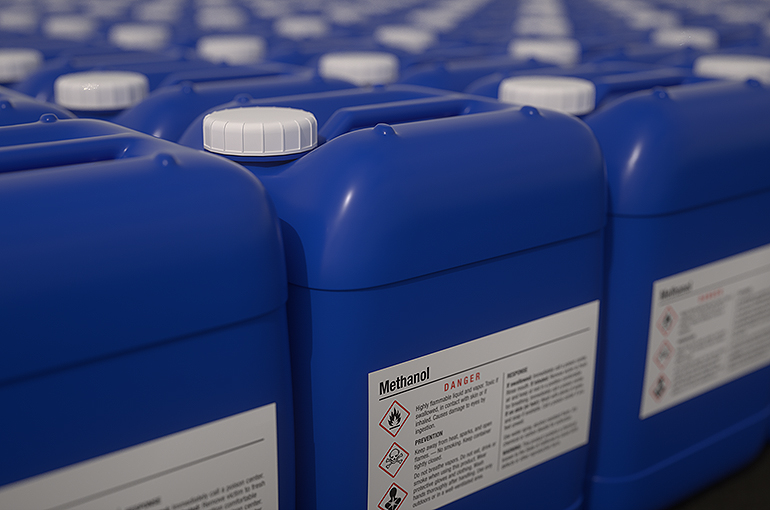 Futures Support High-Quality Development of China's Methanol Industry, Exchange Official Says
Futures Support High-Quality Development of China's Methanol Industry, Exchange Official Says(Yicai) Sept. 15 -- Methanol futures and options, the first liquid chemical futures in China, have significant functions serving the market after years of development, according to a senior official at the Zhengzhou Commodity Exchange, one of the country’s three main commodities markets.
Methanol futures and options also have reasonable and effective contract pricing, tight linkage between futures and cash, and continuously improved risk management functions, Wang Yamei, the exchange’s deputy general manager, said at this year’s China Zhengzhou International Futures Forum on Sept. 8.
According to many experts at the gathering, China's methanol industry is in a critical period of industrial transformation and upgrading, and external demand for the alcohol used in everything from paints to pharmaceuticals will continue to grow. Businesses can use the futures market to achieve stable operations, they added.
Methanol futures prices are gradually becoming the benchmark for the spot market. In the main sales areas of East and South China, about 90 percent of methanol spot trade uses the pricing model of ‘futures price plus or minus contango or backwardation,’ the official noted.
The next steps for the Zhengzhou Commodity Exchange to take include increasing the supply of varieties, listing caustic soda futures options and soda ash options as soon as possible, striving to promote the research and development of propylene futures options, and continuously improving trading and delivery rules, the person said.
Risk Management Tool
Methanol has become one of the top products in the chemical futures market, Gu Zongqin, chairman of the China Nitrogen Fertilizer Industry Association, said at the forum. Many companies that were unaware of methanol futures are now using them to manage market risks, hedge, and maintain and increase value, Gu added.
Futures prices guide businesses to arrange their production plans flexibly and provide a useful reference for government departments and industry associations to formulate industrial policies and plans as well as guide business operations, Gu noted.
Methanol futures and options provide risk-hedging tools and strategic portfolios for industrial clients, according to Jin Yuwei, general manager of Xinhu Futures. The market function of methanol futures is well established, and the market has fully recognized their price discovery and hedging functions, Jin added.
Options, one of the rapidly developing derivatives recently, have gradually become important for spot companies to avoid risks, said Liao Xiangyun, assistant GM of Xinhu Ruifeng Financial Service. Companies face the risk of price fluctuations at every operational stage of business and need to choose futures or option tools based on different situations to find suitable strategies and solutions for risk hedging, Liao noted.
Opportunities and Challenges
Due to the successful development of the methanol-to-olefins technology and the widespread use of methanol fuel, sales of the alcohol have significantly increased in recent years, Gu pointed out. China's methanol production capacity, output, and consumption rank first globally, he added.
With global economic growth slowing and demand for traditional energy sources reaching a peak, the shift to new energy is accelerating, and the demand for methanol in China will continue to grow, said Zhao Jun, a member of the editorial board of China Petroleum and Chemical Industry.
More carmakers will launch methanol-powered vehicles, with the shipping industry also paying close attention to it as a fuel, said Zhao Kai, chief representative of the Methanol Institute in China. As a clean and low-carbon fuel with the potential to achieve carbon neutrality, Methanol will play a huge role in the future, Zhao noted.
The methanol industry in China is in a critical period of industrial transformation and upgrading, according to Gu. The development situation in the country and abroad is complex because of increasing uncertainty and price fluctuations, he added, noting that the risk management needs of firms in the industry chain have increased significantly.
Editor: Martin Kadiev